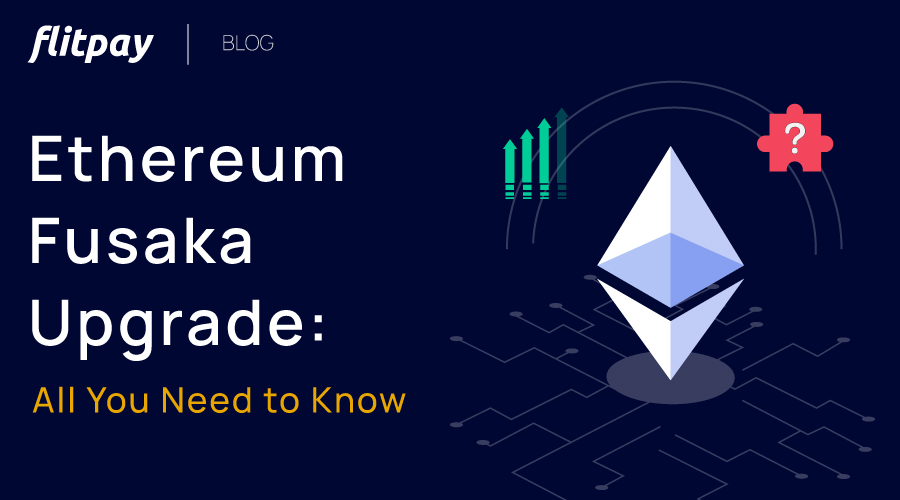Recently, Bitcoin Ordinals have become a hot topic in the crypto town. Be it Twitter, Crypto news portals, or any other crypto-relevant websites, we can see Bitcoin Ordinals trending everywhere.
But to understand this newest crypto technobabble, finding the simplest explanation for it is a rare find.
That’s why we crafted this blog to give you an easy understanding of Bitcoin Ordinals.
If put simply, Bitcoin Ordinals are nothing but NFTs on the Bitcoin Blockchain.
Why do Bitcoiners believe that they can be a big thing?
To understand it, we need to go back to 2009 when Satoshi created Bitcoin.
Satoshi Nakamoto made a peer-to-peer transaction system of value in the form of Bitcoin. And since then, the utility of Bitcoin has been limited to transactions only.
But in 2013, when Vitalik Buterin came up with the first altcoin, Ethereum, he popularized smart contracts and NFTs in the blockchain ecosystem. Since then, NFTs have been growing by leaps and bounds. They along with smart contracts have been proving extremely helpful to Ethereum and its exponential growth.
However, in these last few years, some Bitcoin developers have been trying to widen the utility of Bitcoin by making it possible to store NFTs in the Bitcoin blockchain. In their opinion, Bitcoin must increase its use cases to keep being the largest cryptocurrency over Ethereum.
There have been several developments in the Bitcoin ecosystem so far to achieve this objective. Bitcoin Ordinals is the latest project launched on January 21, 2023, by a Bitcoin developer, Casey Rodarmor for achieving a feasible way to store NFTs on Bitcoin.
What are Bitcoin Ordinals?
Bitcoin Ordinals is a new protocol based on the concept of assigning each Satoshi (a satoshi is 100 millionth of a BTC) a different number called an ordinal number. The users can link this unique number of each Satoshi with any digital art like text, image, video, Gif, or other digital forms which then gets stored with the satoshi unit in the bitcoin blockchain. The size of the NFT data stored in each bitcoin block is up to 4MB.
Anyone can easily track and authorize the NFTs stored in Satoshis by their ordinal number and the transaction details of these satoshis. The developers call them ORDINALS because they get their ordinal numbers according to the ORDER in which the miners mine new BTC blocks.
As the Bitcoin blockchain keeps an immutable record of all transactions, the creators can store their digital art securely. They can also purchase, store, or gift these Artifacts.
How are Ordinals different from Ethereum NFTs?
-
NFTs on Ethereum use token standards like ERC721, an entirely distinct approach from Bitcoin Ordinals. These token standards guide the store and transfer of a specific collection of NFTs.
The working of Ethereum NFTs can be best understood through an example. Cryptokitties was an ERC-721 token standard project developed on the Ethereum blockchain. It allows users to buy and sell digital cats of different types. All its cat NFTs have a unique token ID, and the ERC 721 guide their deployment in the ecosystem of Cryptokitties.
-
Moreover, the Bitcoin NFTs are on-chain because the entire NFT exists in the bitcoin blockchain. However, most Ethereum NFTs are off-chain because it stores the actual NFT image off-chain and only a part of its ID and data on-chain.
Because Ordinals provide an On-chain storage of digital artifacts in the Bitcoin network unlike most Ethereum NFTs that exist off-chain, they are considered more decentralized & secure.
-
Also, according to some analysts, the complex approach used by Ethereum NFTs leads to a higher transaction cost for minting or transferring them on the Ethereum blockchain. Bitcoin Ordinals charge a lower transaction fee due to a fee optimization Taproot update of Bitcoin that came in 2021.
What is the Taproot Update of Bitcoin?
Taproot Upgrade is one of the most significant upgrades in the history of Bitcoin so far. It came to streamline the transaction processing in the Bitcoin blockchain faster and more cost-effective. It did so by allowing the bitcoin blockchain to group multiple signatures and transactions together so nodes can verify them fastly and at a lower cost. Along with this improvement, the Taproot upgrade also allowed the creation of complex smart contracts on the Bitcoin network.
For it, Taproot upgrade integrated new Smart contract operations into the Bitcoin network that facilitated the programming of more complex spending conditions. This improvement of increased programmability in bitcoin and paved the way for Bitcoin ordinals to become possible.
Are Ordinals the first attempt to add NFTs in Bitcoin?
No, there have been several projects launched to bring Bitcoin NFTs. Let's discuss them in brief
Counterparty
Even before NFT was a thing, an ecosystem of verifiable unique digital assets was growing on the Bitcoin blockchain in 2014. It is the first project that introduced NFT tokens with the Rare Pepes collection.
Counterparty is a layer2 solution for Bitcoin like the Lightning network. Robert Dermody, Adam Krellenstein, and Evan Wagner founded it to use the security of the original Bitcoin blockchain and provide additional functionality of verifying the ownership of various digital assets. Counterparty had its DEX and token, which it used to build an ecosystem for minting and trading unique digital assets. It uses data from the Bitcoin protocol and executes smart contracts in it. Then it creates a new ledger of its transactions that are verified using the security functions of Bitcoin.
An easily noticeable difference between the functioning of Counterparty and Bitcoin ordinals is that Counterparty is a layer-2 solution for Bitcoin NFTs, but Ordinals incorporate NFTs into the main Bitcoin blockchain.
Blockstacks
Three years after the launch of Counterparty, another NFT project, Blockstacks launched on the Bitcoin blockchain in 2017.
Stacks is a blockchain platform that can run smart contracts and then combine all its transactions to settle them on Bitcoin. The founder of Stacks calls it a layer 1.5 solution for Bitcoin. According to him, the infrastructure of Stacks does not fit into the definition of layer-1 or layer-2 solutions. It can not exist independently without Bitcoin, so it is not a Layer 1 solution. It also does not fall into Layer 2 solutions category because, unlike most layer 2 solutions, Stacks does not help bitcoin to scale. Instead, it adds dApp deployment abilities in Bitcoin.
Stacks leverage the security of Bitcoin and add new functionalities like Bitcoin DeFi, Bitcoin NFTs, and Bitcoin gaming, enabling decentralized apps and smart contracts into the Bitcoin ecosystem. Stacks uses a distinct consensus mechanism called Proof of Transfer that connects the bitcoin blockchain to that of stacks.
So, why are Bitcoin Ordinals creating so much hype?
Because Bitcoin Ordinals are the first proposal in the history of Bitcoin that made NFT storing possible in the Bitcoin blockchain itself.
Also, they sparked controversy in the Bitcoin community as they put an additional workload on the Bitcoin blockchain.
What is the debate on Bitcoin Ordinals?
Every coin has two sides, and so does every significant upgrade in the blockchain ecosystem.
The emergence of Bitcoin Ordinals is getting mixed reactions from the Bitcoin developers and community. One side claims that NFT in Bitcoin is against the original vision of Satoshi Nakamoto, who wanted Bitcoin to be primarily used for financial transactions only.
Moreover, storing digital art data on the chain brings the possibility of frequent network congestion and a higher transaction fee for bitcoin investors. Since the launch of the Bitcoin ordinals protocol on January 21, 2023, creators have created more than 76,000 NFTs in the Bitcoin ordinals in less than a month. This exponential growth rate of the Bitcoin ordinal ecosystem is a concerning issue for many BTC investors because it can seriously clog the network.
The risk of illicit contents getting stored permanently in the Bitcoin blockchain through Bitcoin ordinals is also worrisome for the reputation of Bitcoin. By now, many bad actors have already stored forbidden literature and even a few confidential documents on the Bitcoin network.
On the other hand, the supporters of Bitcoin ordinals are looking at it as the golden ticket to making Bitcoin the hub for NFTs in the future. In their opinion, this is a groundbreaking invention in Bitcoin history that will help Bitcoin hit its new ATH.
TL; DR
Bitcoin Ordinals are the NFTs stored in the Bitcoin blockchain. They are part of a Bitcoin protocol proposed by a Bitcoin developer Casey Rodarmor and launched on 21 January 2023. Before Ordinals, two previous projects, Counterparty, and Stacks made it possible to make NFTs with Bitcoin. However, they were all layered solutions and did not gain much popularity for various reasons. A significant taproot upgrade added Smart contracts in the Bitcoin blockchain in November 2021. It made it possible for Casey to bring out a way of incorporating NFTs in the Bitcoin blockchain without involving any layers. Though the Bitcoin ordinals are creating controversy in the Bitcoin community, their growth, effect, and advancements are definitely going to be a worthy watch this year.





